Since 2009, we've successfully delivered over 2000 apps, digital products and connected experiences that real problems! www.techaheadcorp.com
Don't wanna be here? Send us removal request.
Text
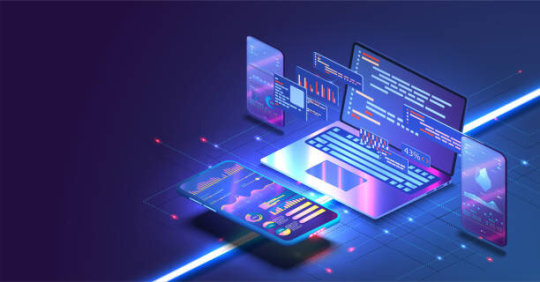
Enterprise App Development
Enterprise app development focuses on creating applications tailored to meet the specific needs of businesses and organizations. These apps often streamline internal processes, enhance productivity, and facilitate communication within the enterprise environment!
#App Development#Mobile App Development#Web App Development#Cross-Platform App Development#Enterprise App Development#iOS App Development#Android App Development#UI/UX Design for Mobile Apps#https://www.techaheadcorp.com/blog/app-development/
0 notes
Text
Web App Development

What Is App Development? A Beginner’s Guide To App Development Basics And Its Types
App development has emerged as a pivotal force, transforming how we interact with our devices. Originating back in 1983 with Steve Jobs’ creation of a rudimentary version. Besides, app development has grown into a sophisticated process that is crucial in streamlining business operations and enhancing user experiences. The ubiquity of mobile applications in today’s world is staggering. Recent statistics reveal that a substantial 21 percent of millennials open an app more than 50 times a day, underlining the pervasive influence of these digital tools in our daily lives.
However, the competitive landscape is intense, with the Apple App Store boasting 4.567 million apps and games and the Google Play Store boasting 3.57 million by July 2022. So, what exactly is app development? At its core, app development is chiefly the intricate process through which developers craft applications designed for smartphones, tablets, and other mobile devices. While web-based and desktop applications are part of the development spectrum, the primary focus remains on creating solutions tailored for the mobile and tablet ecosystem. This article delves into the multifaceted app development world, unraveling the features and considerations that define its essence. So dive in, as we are about to unravel the various intricacies of app development.
App Development Stages
App development is akin to orchestrating a symphony of creativity, technology, and meticulous planning. Moreover, understanding the key stages in this intricate process is crucial for entrepreneurs seeking growth solutions and eager to align with industry experts. In this section, we unveil the sequential phases that form the backbone of app development, shedding light on the app development process and expertise essential for success.
1. Crafting a Vision
Every successful app development endeavor commences with a crucial phase — Project Initiation. This stage involves ideation, requirements analysis, and the discovery phase. When a client approaches us with their business needs, objectives, and product vision, the engagement manager collaborates to shape a comprehensive understanding. For projects with vague concepts, our Discovery phase service aids in refining requirements, estimating costs, and aligning the project with market trends. Therefore the result is a coherent project picture, enabling our expert team to conduct detailed requirement specifications and garner client agreement.
2. Requirements Analysis
Requirements Analysis marks a pivotal point where we delve into the intricate details of end users’ needs. From high-level business requirements to detailed system specifications, our analysis ensures a seamless alignment with user expectations. So this phase bridges the client’s vision and the execution of a functional, user-centric application. Project estimation becomes paramount, encompassing timelines, costs, workforce requirements, and resource allocation to pave the way for successful project planning.
3. Focus on Planning and Mitigating Risks
Effective planning is undoubtedly the cornerstone of mitigating risks, avoiding uncertainties, and ensuring project success. By addressing concerns such as missing features, rebuilds, and overwork, our teams achieve clarity on project deliverables and timelines. Planning goes beyond scheduling product deadlines; it involves continuous, incremental assessments, providing flexibility for adjustments as needed. Moreover, our meticulous planning reduces risks, avoids uncertainty, makes informed decisions, establishes trust, and conveys transparent information to our clients.
4. Prototyping and Design
Prototyping and Design form the creative heartbeat of app development. Through rapid prototyping, we visualize the initial design sketches, fostering a shared vision with our clients. UI/UX designers then weave their magic, incorporating seamless transitions, animations, and intuitive interfaces into the app’s design. This phase bridges the conceptual and the tangible, guiding the transition from design to production, ultimately culminating in the coding phase.
5. Development Process
Development is more than coding; it’s a strategic orchestration of tasks and priorities. Task prioritization, estimation, and collaboration between software engineers, UI/UX designers, and quality assurance engineers are crucial components of this phase.
6. Testing and QA
Scrum is a framework for iterative development cycles or sprints in the agile methodology. Scrum facilitates a focused, uninterrupted work environment, ensuring the team delivers tangible results within specified periods. Regular meetings for iteration cycle planning, status updates, and sprint reviews drive collaboration and adaptability. Using tools like Jira, our teams categorize tasks, ensuring a seamless flow from development to testing. Undoubtedly the importance of acceptance criteria shines through, guiding the project to completion with precision and quality.
What Are the Types of Application Development?
The key categories that define the landscape of app development are:
Mobile App Development
Cross-Platform App Development
Web App Development
Enterprise App Development
Here is a brief overview of each mobile app development type.
1. Mobile App Development
Mobile app development is the art of crafting applications specifically designed for smartphones, tablets, and other handheld devices. These applications cater to the on-the-go lifestyle of users and leverage the unique features of mobile devices. Whether it’s an Android or iOS platform, mobile app development involves creating seamless, user-friendly experiences tailored to the mobile ecosystem.
2. Web App Development
Web app development brings applications to life on web browsers, allowing users to access them through the internet. These platform-independent applications offer flexibility and accessibility across various devices and operating systems. Web apps often serve as efficient solutions for businesses looking to reach a broad audience without the need for users to download and install specific software.
3. Cross-Platform App Development
Cross-platform app development aims to bridge the gap between different operating systems, enabling applications to run smoothly on multiple platforms. This approach reduces development time and costs, as the development team can write code once and deploy it across various platforms. Technologies like React Native, Flutter, and Xamarin have emerged as powerful tools in the cross-platform development landscape.
4. Enterprise App Development
Enterprise app development caters to the unique needs of businesses, focusing on enhancing internal processes, improving productivity, and fostering seamless communication. These applications often integrate with existing enterprise systems, providing a tailored solution for the specific challenges organizations face. From customer relationship management (CRM) apps to business process automation, enterprise app development is pivotal in driving corporate efficiency.
Mobile App Development
In mobile app development, two giants, Android and iOS, reign supreme, powering most smartphones and tablets globally. Understanding the nuances of these platforms is pivotal. Let’s delve into the intricacies of Android and iOS app development, unraveling the unique features, trends, and considerations that define these ecosystems.
Android App Development
Android, the behemoth of the mobile operating system industry, has etched its dominance with a global market share of around 70.29% as of 2023. Developed by the Open Handset Alliance and later acquired by Google, Android boasts a user-friendly interface, robust community support, and extensive customization options. Its versatility extends beyond smartphones, encompassing tablets, wearables, set-top boxes, smart TVs, and more. Android app development demands a keen understanding of Java and Kotlin programming languages. Developers work collaboratively with UI/UX designers and quality assurance engineers, utilizing a technology stack defined at the project’s outset. Regular client meetings and iterative development cycles ensure transparency and alignment with project goals. The use of common languages and cross-platform tools facilitates code sharing and deployment across diverse devices.
Considerations
Fragmentation: Android’s diverse ecosystem introduces device fragmentation challenges, requiring developers to optimize apps for various screen sizes and hardware specifications.
Market Reach: With a vast global user base, Android offers expansive market reach, making it an attractive platform for businesses aiming to reach diverse audiences.
iOS App Development
iOS, Apple’s proprietary mobile operating system, powers iPhones, iPads, and iPod Touch devices. iOS app development involves writing software in Swift or Objective-C, languages designed to deliver seamless performance and security. The iOS ecosystem is renowned for its stringent quality review process, ensuring that only high-quality apps make their way to the App Store. Swift, introduced in 2014, is the primary language for iOS app development, offering a simpler syntax and enhanced security. Developers leverage Swift’s efficiency to create immersive user experiences, taking advantage of Apple’s hardware capabilities. The iOS development environment is known for its meticulous attention to design aesthetics and user interface, ensuring a premium user experience.
Considerations
Exclusivity: iOS mobile apps are exclusive to Apple’s ecosystem, limiting market reach compared to Android. However, iOS users tend to be more engaged and willing to spend on premium apps.
Hardware Integration: iOS app developers harness the unique features of Apple devices, such as the iPhone’s Face ID or iPad’s Apple Pencil, to create innovative and immersive applications.
Choosing the Right Path
As you embark on your mobile app development journey, the choice between Android and iOS hinges on various factors, including your target audience, project scope, and business objectives. Each platform offers distinct advantages, and selecting the right path requires careful consideration. If you want to develop apps suitable for Android and IOS, you can consider cross-platform app development, which we will cover in the next section.
Cross-Platform App Development
Catering to diverse platforms is a common challenge faced by companies aiming for widespread accessibility. The prevalence of iOS and Android devices in the consumer market requires a strategic approach to ensure the app reaches a broad audience.
The Dual Challenge: iOS and Android
With the U.S. consumer market divided nearly equally between Apple and Android users, the need to create mobile applications seamlessly operating on both platforms is evident. Traditionally, companies would opt for native development, employing separate teams for iOS and Android. While this approach provides proximity to each platform, it introduces significant challenges:
Code Duplication: Native development results in two distinct code bases, one for iOS and another for Android. Changes or updates require individual attention and testing for both, escalating maintenance efforts.
Resource Intensiveness: Hiring native developers from a more limited talent pool adds to the overall development cost. The need for specialized expertise for each platform contributes to resource-intensive projects.
Consistency Concerns: Maintaining a consistent user experience across iOS and Android platforms requires meticulous alignment with platform-specific design patterns.
Cross-Platform App Development Frameworks: A Solution
Cross-platform app development frameworks have emerged as a viable solution to address these challenges. These frameworks allow developers to build mobile applications from a single codebase, targeting multiple platforms simultaneously. Here are some popular frameworks leading the cross-platform development landscape:
1. Flutter
Developed by Google
Programming Language: Dart
Notable Apps: eBay, Alibaba, Google Pay, ByteDance apps
Key Features: Hot reload for instant code changes, Material Design support, and independent rendering engine.
2. React Native
Developed by Meta Platforms (formerly Facebook)
Programming Language: JavaScript
Notable Apps: Skype, Bloomberg, Shopify, various Facebook and Instagram modules
Key Features: Fast Refresh for immediate component changes, focus on UI responsiveness, strong developer community.
3. Xamarin
Owned by Microsoft
Programming Language: C#
Notable Apps: UPS, Alaska Airlines, Academy Members (Academy of Motion Picture Arts and Sciences)
Key Features: Utilizes .NET BCL for comprehensive features, Xamarin.Forms for consistent UI, compiled bindings for improved performance.
Choosing the Right Framework for Your Project
While these frameworks offer potent solutions, the choice depends on specific project requirements, goals, and other factors unique to your development endeavor. Considerations such as programming language preferences, project scale, and community support are crucial in determining the ideal framework for your cross-platform app development.
Web Application Development
Web applications have become integral tools that provide dynamic user experiences and serve as valuable insights for businesses. So, a web app is an interactive program accessed through a web browser running on a web server. Unlike traditional web pages, web applications prioritize user experience, leveraging an application program interface (API) to gather substantial user data. This data, encompassing customer interests, usage patterns, and preferences, becomes a goldmine for product refinement and targeted marketing strategies.
Distinguishing Features
User-Centric Design: User experience and user interface dictate the design of web applications, ensuring that interactions are intuitive and tailored to user preferences.
API Integration: Web applications employ APIs to gather and process large-scale user data, enabling automation and personalized experiences.
Front-End and Back-End Dynamics
Understanding the front-end and back-end dynamics is pivotal in web application development:
Front End
It involves the part of the web app that interacts with end-users.
Focuses on UI/UX design, SEO optimization, and enhancing performance.
Back End
Encompasses the background functioning of the web application.
Manages server handling, site architecture, database, security, and URL routing.
Enterprise App Development
In the fast-paced realm of enterprise-sized businesses, the role of technology in streamlining operations and enhancing productivity cannot be overstated. Enterprise app development emerges as a strategic initiative, focusing on crafting customized applications to address specific business needs. Let’s delve into the world of enterprise app development, exploring its nuances and the common categories that define this dynamic landscape.
Defining Enterprise App Development
At its core, enterprise app development is the meticulous process of creating applications tailored for large-scale businesses. These applications, once developed, serve the crucial purpose of addressing common pain points, automating workflows, and providing users with efficient tools to perform tasks seamlessly. The end goal is not just to develop an app but to create a solution that aligns with the unique requirements of enterprise-sized organizations.
Categories of Enterprise Mobile Apps
Enterprise mobile apps are categorized based on their organizational scope and impact. Understanding these categories provides insights into how these apps contribute to organizational efficiency:
1. Employee Level Apps
For Example: Slack
Purpose: Internal communication and workflow management
Features: Real-time updates and integrations for enhanced productivity.
2. Department Level Apps
For Example: CRM (Customer Relationship Management)
Purpose: Workflow enhancement for specific departments (e.g., sales, marketing)
Features: Productivity monitoring and comprehensive task tracking.
3. Enterprise Level Apps
For Example: Inventory Management Apps
Purpose: Connect all departments, simplify distribution and automation of work
Features: Centralized document access, real-time tracking, and alerts.
Types of Enterprise Applications
Enterprise app development encompasses various types, each serving a specific organizational function. So Here are some notable types:
1. Asset Management Apps
Function: Record and track assets throughout their life cycle.
Benefits: Enhanced visibility, utilization insights, and streamlined asset tracking.
2. HRMS (Human Resource Management System) Apps
Function: Store employee information and support HR functions.
Benefits: Automation of recruiting, training, benefits, and payroll processes.
3. Procurement Apps
Function: Provide complete control over purchasing activities.
Benefits: Consolidated purchasing information, fostering visibility and transparency.
4. Customer Support Apps
Function: Assist support agents in helping customers.
Benefits: Quick answers, troubleshooting support, and issue resolution.
5. Sales Apps
Function: Streamline and optimize sales processes.
Benefits: Marketing new products, informing customers about discounts, and speeding up sales operations.
Empowering Enterprise Growth Through Technology
Enterprise app development is a strategic investment in leveraging technology to enhance operational efficiency, automate workflows, and facilitate informed decision-making. In conclusion, as enterprises navigate the complexities of modern business environments, the role of custom applications becomes increasingly pivotal. For enterprises seeking innovative and impactful app solutions tailored to their unique needs, Techahead stands as a trusted partner. Explore our expertise in crafting enterprise applications that not only empower growth but also enhance your business efficiency.
Conclusion
In conclusion, as the demand for seamless user experiences continues to soar, app developers play a pivotal role in orchestrating creativity, technology, and meticulous planning. Whether you’re creating a mobile app to cater to the on-the-go lifestyle or an enterprise solution to enhance internal processes, the realm of app development offers limitless possibilities. Therefore choosing the right development path, be it native Android or iOS, cross-platform frameworks like Flutter or React Native, or the specialized realm of enterprise applications, demands careful consideration aligned with your project goals. Contact TechAhead today for all your web and mobile app development needs!
#https://www.techaheadcorp.com/blog/app-development/#App Development#Mobile App Development#Web App Development#Cross-Platform App Development#Enterprise App Development#iOS App Development#Android App Development#UI/UX Design for Mobile Apps
0 notes
Text
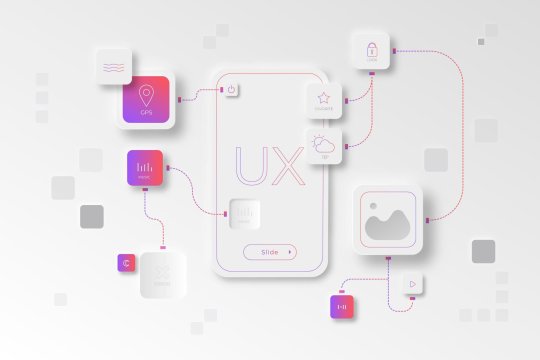
UI/UX Principles
UI/UX Principles are fundamental guidelines governing both User Interface (UI) and User Experience (UX) design. They dictate how visual elements and interactive features should be designed to optimize user satisfaction!
#https://www.techaheadcorp.com/blog/best-ux-design-practices/#ux design#user experience#design best practices#ui/ux principles#mobile app design#web design guidelines#user-centric design#interaction design#usability tips#human-centered design#responsive design#user interface design#ux research#prototyping#wireframing#accessibility in design#visual hierarchy#information architecture#design thinking#mobile app usability
0 notes
Text
User Experience
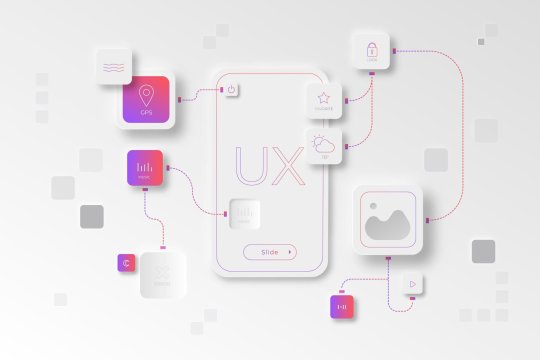
Crafting Exceptional Experiences: Best UX Design Practices Unveiled
In the ever-evolving landscape of technology, creating a seamless user experience (UX) is paramount, particularly for e-commerce websites and apps aiming to drive conversions. Therefore being aware of the best UX design practices is crucial. The significance of UX resonates throughout the entire customer journey, influencing everything from the initial click on the homepage to the ultimate order confirmation. Overlooking established UX best practices can jeopardize this seamless journey, potentially leading to missed sales opportunities. In this comprehensive guide, we delve into the realm of UX design, offering insights into the best practices curated by the expert team at TechAhead.
What Is UX Design?
User Experience design is more than just a process; it's a strategic approach that design teams employ to create products that resonate with users on a profound level. It involves a holistic design encompassing the entire journey, from the first interaction to the final integration of the product. In conclusion, UX design is the art and science of making products not only usable but also meaningful and relevant. UX design spans various dimensions, including branding, aesthetics, usability, and overall functionality. It's not limited to the digital interface but extends to all touchpoints associated with the product.
From the enticing allure of a marketing campaign to the practicality of after-sales support, every facet contributes to the user's overall experience. For UX designers, cultivating familiarity with these best practices is essential. This knowledge not only helps steer clear of common pitfalls but also elevates the customer's perception of your brand. Let's explore the key UX design principles every designer should be well-versed in.
Key UX Design Principles Every Designer Should Know
1. Deep Understanding of User Needs
Creating a seamless user experience starts with a profound understanding of user needs. You can conduct user research, user testing, and usability testing in order to gain insights into your audience and get a deep understanding of various touchpoints.
2. Design Consistency for Visual Appeal
Visual elements and design consistency are more than aesthetic choices; they impact user satisfaction. Users expect a seamless and visually consistent experience from the landing page to the last interaction.
3. Streamlined User Flow and Learning Curve
Optimize user flow and minimize the learning curvature. A well-thought-out design process ensures that users can intuitively navigate your website or app, reducing friction and enhancing satisfaction.
4. Embracing Mobile Responsiveness
In a world dominated by mobile users, prioritize mobile apps and ensure your design caters to the needs of iPhone users. Design elements should offer a consistent and visually appealing experience across different touchpoints.
5. Prioritize Accessibility Standards
Inclusivity is key. Adhere to accessibility standards, considering users employing assistive technologies like screen readers. Designing with accessibility in mind ensures that your platform is usable by a diverse audience.
Now let's delve into the UX Design best practices that should be followed in your UX design process.
Best UX Design Practices
In the dynamic landscape of digital design, ensuring that your product resonates with everyone is not just good practice—it's a fundamental principle of design ethics. As we delve into the realm of UX design, we uncover practices that go beyond aesthetics, focusing on creating inclusive and seamless experiences for users from all walks of life.
1. Prioritize Accessibility Standards
Good design should work for everyone, including those with sight and hearing disabilities. By conforming to accessibility standards in your UX practices, you're not just complying with guidelines but uplifting the user experience for a diverse audience. Consider the 8% of colorblind men—this seemingly small percentage translates to over 26 million American men. Empathy drives the design process, ensuring your product or site is accessible.
2. Keep it Consistent Across the Board
Consistency is the bedrock of UI/UX best practices. Whether it is design consistency or visual consistency, it isn't just about aesthetics; it's a strategic decision that limits confusion, builds trust, and reinforces your brand. Whether it's visual elements, functional controls, or the tone of your messaging, maintaining consistency ensures users can navigate your UI effortlessly. The various UX design elements from visual to functional elements, and even the voice and tone of your product, consistency makes the user experience predictable and intuitive.
3. Monitor User Behavior and Eliminate Friction
Your ideal user flow is the blueprint for an exceptional user experience. However, deviations from this flow can signal friction points in your design. Tools like heatmaps and session recordings become your eyes on user behavior. Identify pain points, remove blockers, and enhance the user journey. It's not just about designing a product; it's about refining it based on real user interactions.
4. Optimize the Browsing Experience
The homepage is often the first touchpoint for users. The UX on this page is critical in setting the tone for the entire experience. It should guide users on navigation, introduce categories, or search bar. Learn from common pitfalls and ensure your homepage stands out, builds trust, and establishes credibility.
5. Streamline Navigation Paths
Clear navigation is your users' GPS through your website or app. It informs them of their location, your site's content, and how to find what they're looking for. Well-thought-out navigation not only lowers frustration but also instills confidence in users. Make it user-friendly, ensuring your customers can effortlessly traverse your digital space.
6. Prioritize Mobile UX for All Users
With over half of all website traffic coming through mobile, responsive design is no longer a luxury—it's a necessity. Responsive designs look good on all screens, load faster, and rank higher in search engines. A poor mobile experience can impact your bottom line significantly, making it essential to optimize for mobile users.
7. Streamline the Checkout Process
The checkout process is a critical element of UX often overlooked. Complex checkout flows contribute to abandoned orders. Streamline the process, make it user-friendly, and conduct testing to eliminate roadblocks. A seamless checkout experience can significantly impact conversion rates.
8. Design Hierarchy for Visual Clarity
Establishing a visual hierarchy in UI design elements ensures users find primary functions faster. A clear hierarchy guides the user's attention through the interface, whether it's the size, colour, or placement of elements. Presenting functions in a logical order enhances the overall user experience.
9. Use Clear Navigation Tools
Users have pre-established behaviors and expectations. Sticky headers, search bars at the top, organized drop-down menus, and familiar page structures all contribute to a positive user experience. Align your navigation with user expectations to create a seamless journey.
These UX best practices are crucial for product managers, and the design team must inculcate these in their design process. These UX design best practices will enhance the user experience and help standardize the UX design process.
Mistakes for every UX Designer to Avoid
In the ever-evolving landscape of product development, pursuing an exceptional user experience (UX) can be riddled with common pitfalls. Let's unravel these challenges and explore how product teams can sidestep the most prevalent mistakes in UX design.
1. Failing to Prioritize User-Driven Decisions
The Mistake: It's easy for product teams to lose sight of the end-users needs, assuming that they inherently understand those needs. However, this assumption can lead to misguided product decisions.
How to Avoid It: Actively seek user feedback and let it steer your product decisions. Embrace user perspectives to validate features on your roadmap and ensure alignment with actual user needs.
2. Aimless Redesigning
The Mistake: UX design is iterative but constant and unnecessary redesigns can unsettle users. Change, even if beneficial, may be met with resistance.
How to Avoid It: Redesign with Purpose. Clearly define goals and establish a business case before embarking on any redesign. When changes are necessary, keep them small and iterative, incorporating user feedback through testing.
3. Neglecting Testing Before Iteration
The Mistake: Assuming you know what users need without thorough testing can lead to misguided design decisions.
How to Avoid It: Testing is crucial, especially during prototyping. Before launching iterations, conduct thorough testing, gather feedback, and iterate based on user insights.
4. Overwhelming Users with Information
The Mistake: Providing users with too much information, options, or features can overwhelm and hinder the overall user experience.
How to Avoid It: Embrace simplicity. If a feature or element isn't essential, consider omitting it. Avoid overwhelming users to ensure a seamless and focused experience.
5. Siloing UX Decisions Within the Product Team
The Mistake: Isolating UX decisions within the product team can lead to inconsistencies across the entire user experience.
How to Avoid It: UX design requires collaboration across teams. Work hand-in-hand with marketing, support, design, and other teams. Share user data, collaborate on design changes, and maintain open communication.
In the intricate realm of UX design, these pitfalls are roadblocks that can hinder product success. Product teams can carve a path toward a seamless and delightful user experience by actively avoiding these mistakes and championing a user-centric approach. At Techahead, we emphasize design and a holistic approach to crafting digital experiences. Explore our services and join us in creating user-centric design solutions that stand the test of user expectations.
Conclusion
From the initial interaction to the final confirmation, the user experience orchestrates a symphony of impressions. Neglecting established UX best practices can unravel this symphony, resulting in missed opportunities. In this guide, we've navigated through the core principles of UX design, exploring the essentials and unveiling the best practices curated by TechAhead's expert team. From a profound understanding of user needs to embracing mobile responsiveness and prioritizing accessibility, each practice is a thread woven into the fabric of seamless user experiences. Furthermore, we've dissected the pitfalls—common mistakes that can derail UX design initiatives. Product teams can fortify their journey toward exceptional UX by prioritizing user-driven decisions, avoiding aimless redesigning, and fostering cross-team collaboration!
youtube
#https://www.techaheadcorp.com/blog/best-ux-design-practices/#ux design#user experience#design best practices#ui/ux principles#mobile app design#web design guidelines#user-centric design#interaction design#usability tips#human-centered design#responsive design#user interface design#ux research#prototyping#wireframing#accessibility in design#visual hierarchy#information architecture#design thinking#mobile app usability#Youtube
0 notes
Text

Flutter App Development
Elevate your digital presence with our expert Flutter app development services, crafting high-performance cross-platform solutions!
#https://www.techaheadcorp.com/services/flutter-app-development-company/#digital marketing services#growth marketing strategies#online advertising#search engine optimization#social media marketing#content marketing#email marketing#conversion rate optimization#website analytics#pay-per-click advertising#mobile marketing#influencer marketing#video marketing#lead generation#customer segmentation#marketing automation#brand development#online reputation management#user experience optimization#data-driven marketing#digital campaign management#audience targeting#competitive analysis#marketing funnel optimization#strategic planning#web application development#custom web development#web development services#responsive web development
0 notes
Text
Flutter App Developers

Flutter App Development Services: Everything You Need To Know
Flutter apps are popular on the market for a reason. The seamless multi-platform experience relies on a single code base, allowing developers to build stunning cross-platform mobile, desktop, or embedded applications. Within Flutter, a rendering engine helps you visualize your solutions before they are live.
What exactly is Flutter?
Flutter is a powerful, flexible, and popular UI Software development platform created by Google and launched in 2017. Already millions of mobile app developers are deploying Flutter to create their next mobile apps, and in a short time, they have captured a huge market size in the mobile app development niche. Mobile apps made by Flutter are being used by millions of users worldwide.
What are the main benefits of Flutter app development services?
One of the primary benefits of using Flutter is that you need only one single codebase and use it across Android, iOS, web, smart TVs, wearables, and other platforms. Hence, deployment is fast, the cost of developing mobile apps for different screens is negligible, and the great UI functionality and features mean delighted customers and powerful performance.
How to choose the best Flutter App Development Company?
Always check what previous clients say about the Flutter app development company you will select for your next project. Find out about their market sentiments by checking their listings on popular and renowned listing portals such as Clutch, and check their reviews on Google to find out the true worth of that agency.
Why is TechAhead a renowned Flutter app development company?
TechAhead has a rock-solid experience of more than 13 years in designing, developing, and launching 2000+ mobile apps worldwide. We have worked with 700+ startups, enterprises, corporations, and SMEs in the past, empowering them to unleash digital transformation and accelerate their business growth.
We have partnered with some of the biggest global brands, such as American Express, Disney, Audi, AXA, ICC, and others, and helped them generate more business, profits, and loyalty. Overall, we have worked with 700+ businesses.
What are the top mobile apps developed by TechAhead?
We have worked and partnered with some of the biggest global brands such as American Express, Disney, Audi, AXA, ICC, and others, and helped them generate more business, more profits, and more loyalty. Overall, we have worked with 700+ businesses.
Who will own the design, concepts, and prototypes of my idea?
Every design, concept, and idea shared by our clients belongs to our clients. We specifically mention this clause while signing the NDA before starting any project. Every intellectual asset we or our clients create is returned to them once the project is live. We take intellectual property protection pretty seriously and leave no stone unturned to safeguard it.
Our Flutter app development company is renowned for conceptualizing, designing, and launching stunningly powerful and scalable mobile apps that empower our clients to dominate their market and disrupt the status quo.
We offer cutting-edge, futuristic Flutter app development solutions that are tailor-made for your requirements and business objectives. The results are web applications and mobile app development cross-platform solutions that are functional and in line with your needs.
TechAhead is changing the rules of innovation, creativity, and excellence: Our Flutter App Development Company provides an extra competitive edge that changes everything. Here, we showed that we can develop apps that are recognized worldwide and showcase the true greatness of our Flutter app developers to the wide public!
#https://www.techaheadcorp.com/services/flutter-app-development-company/#Flutter App Development#Dart App Development#Cross-Platform App Development#Mobile UI Framework#Flutter Framework#Flutter SDK#Flutter App Development Services#Flutter Development Solutions#Dart App Development Services#Cross-Platform Mobile App Services#Custom Flutter App Development#Flutter App Design#Flutter App Developers#Dart App Developers#Cross-Platform App Developers#Experienced Flutter Developers#Mobile App Development Experts#Skilled Flutter Programmers#Flutter App Development Company#Dart App Development Firm#Cross-Platform App Development Agency#Flutter App Development Studio#Top Flutter Development Company#Mobile App Development Company#Flutter App Development Solutions#Custom Flutter Solutions#Innovative App Development with Flutter#Flutter App Deployment#Scalable Flutter Solutions
0 notes
Text
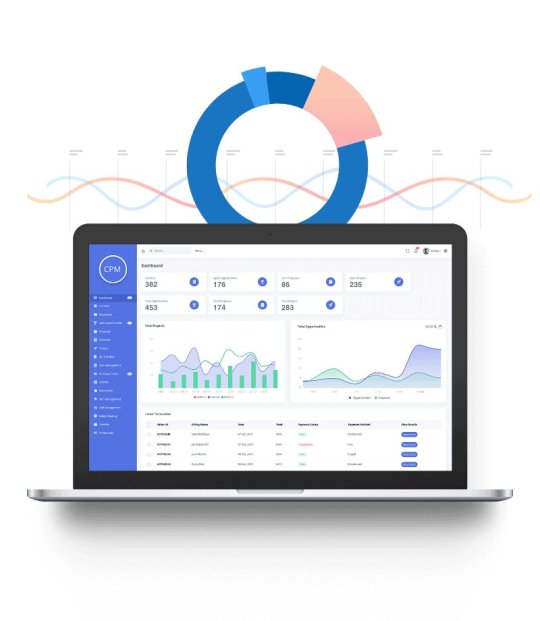
DevOps Services
TechAhead Corp's DevOps services encompass a range of solutions designed to streamline software development, testing, and deployment processes. Our experts assist in implementing continuous integration, automation, and cloud migration strategies to boost efficiency and reduce time-to-market. With TechAhead Corp's DevOps services, businesses can achieve greater agility, collaboration, and innovation in their software development lifecycle!
#https://www.techaheadcorp.com/services/devops-consulting-services/#DevOps Consulting Services#DevOps Consulting Company#DevOps Development Company#Best DevOps Consulting Companies#DevOps Consultants#DevOps Services#DevOps Tools#DevOps Experts#DevOps Strategy#DevOps#TechAhead Corp#TechAheadCorp#techaheadcorp.com
0 notes
Text
DevOps Development Company
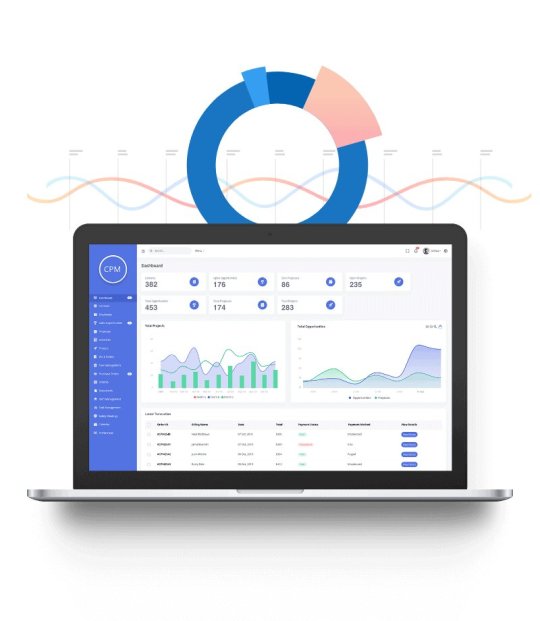
Build A Culture Of Agility And Automation With DevOps Consulting Services
We are a leading DevOps consulting company working with various DevOps tools for continuous monitoring and work that aligns with industry best practices. If you wish to adopt DevOps consulting services in your company to achieve your business goals, you are in the right place.
Choose Our Skilled and Certified DevOps Consulting Service
The ever-changing business landscape requires teams to be agile and collaborative enough to respond to any challenge quickly and effectively. Our high-end DevOps services equip you to achieve precisely that. We pride ourselves on our development and operations teams providing DevOps services that bring continuous development to your business.
DevOps Assessment
Let our DevOps experts analyze your existing infrastructure, identify your core business propositions, and assess your current DevOps practices to propose tailor-made DevOps practices that will make deployment hassle-free and secure.
DevOps Automation
Automating processes that generally need human intervention is at the core of building an end-to-end delivery pipeline. Our DevOps experts help in identifying strategies that can be automated and then develop a script for implementing the automation. Our DevOps consulting firm is the best choice for your business.
DevOps Implementation
Our DevOps Consultants assist in developing an implementation roadmap that considers the business operations and available resources. From CI CD pipeline to DevOps project recovery consulting, we can revamp your DevOps strategy, implement DevOps tools, and be a serious partner for your business.
Continuous integration
Put testing and security at the core of development by testing every incremental change to the source code and deploying the tested build. Implement continuous integration and delivery practices to reduce rollbacks, improve time to market, and cut costs.
Cloud Migration
Apply the best DevOps practices to migrate workflows and applications to the cloud for anytime-anywhere availability. Migrating to cloud computing equips your workforce and empowers your business to respond to real-time challenges.
DevSecOps
Integrate security first approach into your infrastructure and applications from the design phase. Make security an integral part of your DevOps efforts by automating compliances and regulations into your workflows.
Key benefits of adopting the DevOps way of working
DevOps empowers the three pillars of your business – People, Process, and Technology – to deliver high-quality software solutions with improved collaboration, quicker time to market, and innovative thinking.
Anywhere Anytime Infrastructure
Equip your workforce to continue working whatever the challenges. Adopt a cloud-centric software infrastructure to access workflows and applications anywhere without disruption. We proudly offer infrastructure automation and cloud infrastructure management solutions to assist you with building or time-consuming infrastructure modifications.
Edge computing in our DevOps Consulting services
Businesses are cutting costs and delivering at speed by implementing edge computing. Use DevOps to rapidly identify and build applications that run where your data is without compromising security or flexibility. We are proudly among the best DevOps consulting companies around the globe.
Hybrid workforce by design
Be flexible in how your teams operate by providing equal opportunities to remote and in-house members. Adopting a human-centric approach to working builds loyalty and ensures sustainable development. Our DevOps consulting services will help you automate your work regardless of your business model.
Automate work to encourage innovation
Minimize workflows that need human intervention to give your teams enough bandwidth to think out of the box and innovate. Pivot to a business model that equips your teams to be agile enough to capitalize on new ideas. Known for our successful DevOps implementation, our experts can assist you in every phase of your DevOps assessment roadmap.
Integrate testing with development
Build a continuous integration and delivery pipeline that tests each code change for function and security. Reduce deployment failures and feature rollbacks by moving to testing early in the software development lifecycle.
Scalable and Secure
Retain complete control of your products when you scale. Integrate compliance policies and frameworks into your workflows using the DevOps model so that you keep data and applications secure even when the business grows.
Why is TechAhead the best partner for DevOps services?
We use the right tools to establish communication channels between your IT operations, software development, testing and quality assurance, product security, and other teams to create a streamlined software delivery pipeline to guarantee the continuous delivery of high-quality software.
Unique Approach
TechAhead DevOps consultants help integrate IT into the core of your business to build an organization that is resilient, innovative, human-centric, and responsive to challenges. Our DevOps services company has experience with new software releases, CI CD pipeline trends, and everything you need for a perfect DevOps strategy.
Rich Experience
TechAhead brings more than 13 years of experience to the table. As a top DevOps development company, we ensure the highest efficiency at a high velocity. Regarding experience, we are a DevOps consulting company with many years in DevOps implementation and one of the top consulting companies in the DevOps solutions industry.
Global Development And Operations Teams
With our offices in Los Angeles, USA, and Noida, India, we bring you the best of the two worlds in a single organization. Whether you need implementation or Devsecops consulting, know that you are in the hands of a global team with decades of combined experience in the industry.
Top Clientele
TechAhead's superior approach to DevOps development services landed us the opportunity to work with over 700 global brands and startups. The continuous deployment of advanced DevOps consulting services allowed us to attract and retain top DevOps consulting companies in our portfolio.
Trusted by the Best
Our consistent focus allowed us to work with clients like AXA, Allianz, Disney, Starbucks, Audi, Lafarge, ICC, and more. We can revamp any inefficient testing process or slow software delivery with the right implementation services, bringing an agile methodology for a perfect customer experience.
Efficiency Guarantee
We have efficiently delivered 2000+ applications across all top frameworks on multiple cloud platforms that work on various devices. We can update any slow manual process and put our advanced automation tools into practice. Our processes align with the complex DevOps methodology and follow continuous testing to ensure everything is in the right place.
Insights on DevOps consulting implementation and strategies
DevOps development services, and make the right decision at the right time. Our robust ecosystem allows us to modernize product engineering with any unique challenges our clients bring in today's competitive market.
In conclusion, TechAhead offers top-notch DevOps consulting services to help businesses build a culture of agility and automation. With a unique approach, rich experience, and a global team, they ensure the highest efficiency and innovation. Trusted by renowned brands, their efficiency guarantee and insights make them the best partner for DevOps services, enabling clients to thrive in today's competitive market!
#https://www.techaheadcorp.com/services/devops-consulting-services/#DevOps Consulting Services#DevOps Consulting Company#DevOps Development Company#Best DevOps Consulting Companies#DevOps Consultants#DevOps Services#DevOps Tools#DevOps Experts#DevOps Strategy#DevOps
0 notes
Text

App Store Optimization Strategies
Implement result-driven App Store Optimization Strategies for Better App Rankings!
#https://www.techaheadcorp.com/services/app-store-optimization-company/#digital marketing services#growth marketing strategies#online advertising#search engine optimization#social media marketing#content marketing#email marketing#conversion rate optimization#website analytics#pay-per-click advertising#mobile marketing#influencer marketing#video marketing#lead generation#customer segmentation#marketing automation#brand development#online reputation management#user experience optimization#data-driven marketing#digital campaign management#audience targeting#competitive analysis#marketing funnel optimization#strategic planning#web application development#custom web development#web development services#responsive web development
0 notes
Text
App Store Marketing

App Store Optimization Company: Everything You Need To Know
In the ever-expanding world of mobile applications, one crucial aspect stands out—visibility. To ensure your app doesn't get lost in the digital crowd, understanding the art of App Store Optimization (ASO) is paramount. This comprehensive guide delves into the world of ASO, shedding light on key factors that can propel your app to the forefront of app stores. Drive downloads and engagement with effective App Store Marketing.
How is an app ranked on app stores?
Many factors are involved with ranking on Android or Apple’s app store. Many things need to be completed to be guaranteed to rank higher. The number of installs, purchases made, the relevance of keywords with the app, etc. As a premier app store optimization agency, TechAhead will drive profitable results for your app.
How do I start with ASO initially?
Focus a lot on the app title and description/subtitle. It should match the app’s functionality and should revolve around the keywords users will type to look for it.
Should I use ASO tools?
It is entirely a personal choice and depends upon the KPIs or the metrics you want to measure. The tools might be proper if you focus on specific performance factors. Our digital marketing company services with excellent marketing skills can do the work.
Is there a need for an ASO Expert?
There is a massive need for app store optimization agencies to optimize your app for the stores. TechAhead works similarly to SEO specialists in concept, but our domain is around app stores. We are ASO experts across multiple app stores who understand the algorithm, search engines, app analytics, keyword optimization and have the right business acumen to rank your app organically.
Why is ASO important?
App stores are the bridge between your business and customers. Your app will appear in the top results with the proper app store optimization. This is a way to become popular in the app store localization marketplace and beat the competition.
What is the limit of the app title and description?
Google Play Store: On Google Play Store, the app title can be 50 characters long, and the app’s visibility description can be 80 characters.
Apple App Store: The character limit for titles and descriptions on the Apple App Store is 30 characters.
In conclusion, the success of your mobile app hinges on its discoverability. App Store Optimization is the compass that guides your app through the intricate landscape of app stores, ensuring it reaches its intended audience. With the right strategies and expert guidance, your app can ascend the rankings, captivate users, and thrive in the competitive world of mobile applications. TechAhead, as a premier App Store Optimization company, offers the expertise and insights you need to navigate this digital terrain successfully. Elevate your app's visibility, engage users, and achieve the recognition it deserves with the power of ASO!
#app store optimization#aso services#mobile app optimization#app ranking improvement#app store marketing#increase app downloads#app visibility enhancement#keyword optimization#app description optimization#app icon optimization#app store review management#competitor analysis#app store keyword research#app store optimization strategies#aso experts#app store seo#mobile app store optimization#app store ranking factors#app store listing optimization#app store conversion rate optimization#app store ratings and reviews#localized aso#app store a/b testing#app store algorithm updates#aso tools and techniques#aso consultation#aso reporting and analytics#app store discoverability#app store user acquisition#aso best practices
0 notes
Text
DevOps Platforms And Software Development
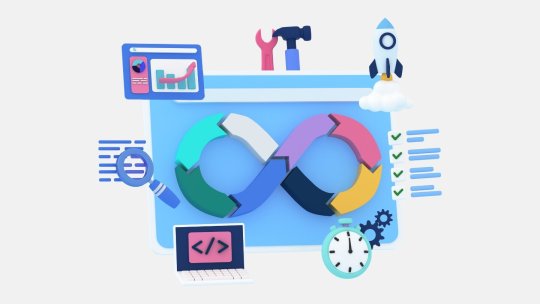
28 Best DevOps Platforms And Tools: The ULTIMATE Guide
These best DevOps platforms and software can be a game-changer for businesses aiming to streamline their software deployment and development processes. The right platform or tool automates tasks and boosts collaboration between the operations and development teams. This, in turn, leads to quicker deployment of high-quality software that meets user expectations. Selecting from the Best DevOps Platforms and Software requires understanding your team's specific needs and how each tool can address them effectively. Tech Ahead provides cutting-edge DevOps platforms and software development solutions to streamline and enhance the software delivery lifecycle.
Understanding DevOps Platforms and Software
'DevOps' amalgamates two pivotal roles in software development: Development (Dev) and Operations (Ops). It's a methodology that encourages collaboration between these traditionally separate teams to streamline the entire software development lifecycle. Focusing on DevOps platforms and tools, they are integrated systems designed to support this collaborative approach by automating many routine tasks involved in developing applications from design through deployment stages.
Purpose of DevOps Tools
A range of specialized DevOps tools have been developed for different aspects of DevOps practices. Some handle code creation, while others manage testing or deployment processes. These popular DevOps automation tools enable faster releases with fewer errors due to their automation capabilities at various stages. Besides accelerating release cycles, these open-source DevOps tools also promote better communication among operations teams, thus fostering a culture where continuous improvement becomes part of everyday work habits within agile software development environments.
Monitoring and Error Reporting Platforms: The Backbone of App Performance
The effectiveness of a web app or mobile application is essential for its success. Monitoring and error reporting platforms are the backbones for maintaining this performance, offering tools that track application behavior, detect anomalies, and diagnose issues in real time.
Let's dive into these top 28 Best DevOps Platforms and Tools:
Raygun: Comprehensive Error Tracking
Nagios: Pioneer in IT Infrastructure Monitoring
Firebase Crashlytics: Specialized Mobile App Support
Opsgenie by Atlassian
Puppet Enterprise: The Model-Driven Approach
Cooking up Configurations with Progress Chef
An Open Source Solution: Ansible
SysAid: An All-Rounder In Configuration Management
Jenkins: A Versatile Open-Source Tool
Bamboo: Seamless Release Management
Amazon ECS: Containerized Deployments Simplified
Octopus Deploy: Advanced Deployment Functionalities
CircleCI: Speedy Builds And Tests
Docker: A Popular DevOps Tool
Redhat Openshift: Enterprise-Grade Solution
Kubernetes: The Container Orchestration King
LXC/LXD: Linux-Based Virtualization
Git: A Leading SCM Tool
Mercurial: User-friendly SCM
Apache (SVN) Subversion
SonarQube
Jira
Gradle
Atlassian Open DevOps
Azure DevOps Services
AWS (Amazon Web Services) DevOps
Terraform: An Open-Source Tool for Infrastructure Management
Google Cloud Build: Streamlining Continuous Integration/Continuous Deployment
TechAhead: Pioneering Global Excellence In The Field Of Development Work With Best-in-class Software
An industry leader in this domain - TechAhead has earned global recognition for their expertise in developing high-performing digital products using these best-in-class DevOps Platforms and software. They understand the importance of selecting appropriate DevOps automation tools tailored to client requirements, ensuring efficient workflow throughout the entire software development lifecycle. Their commitment to quality deliverables sets them apart, making them a one-stop solution provider for all application and software development automation needs.
Navigating numerous options might seem daunting, but it becomes easier to pick suitable ones once you identify what your team requires. No two projects are alike, so finding the right fit for your needs is essential. And if you ever find yourself needing expert guidance, remember companies like TechAhead are always ready to help.
The DevOps landscape is vast and diverse, with many platforms and software tools available to facilitate the development, deployment, monitoring, and maintenance of web apps and mobile applications. These popular DevOps tools are essential in streamlining operations teams' workflows while fostering collaboration among DevOps teams.
Conclusion
Exploring the world of DevOps platforms and software can feel like navigating a labyrinth. But, with this comprehensive guide, you've been armed with knowledge about top tools in various categories - from monitoring to DevOps configuration management tools, CI/CD deployment, and containerization. We've dived into source code management and build tools while shedding light on cloud-based solutions. We even touched upon security essentials for your applications.
The key takeaway? No single answer fits all when it comes to the best DevOps tools. It all concerns what works best with your team's needs and workflow. Understanding these Best DevOps Platforms and Software is part of the journey towards efficient software development. The real magic happens when you leverage them effectively. Contact TechAhead today for all your DevOps development, web, and mobile app development!
#https://www.techaheadcorp.com/blog/best-devops-platforms-software/#DevOps tools#DevOps practices#DevOps solutions#DevOps automation frameworks#DevOps software stack#DevOps security tools#Best DevOps Platforms and software#DevOps Platforms and Software#DevOps Platforms and Software Development#DevOps Platforms#DevOps Platforms Tools#TechAhead Corp#TechAheadCorp#techaheadcorp.com
0 notes
Text
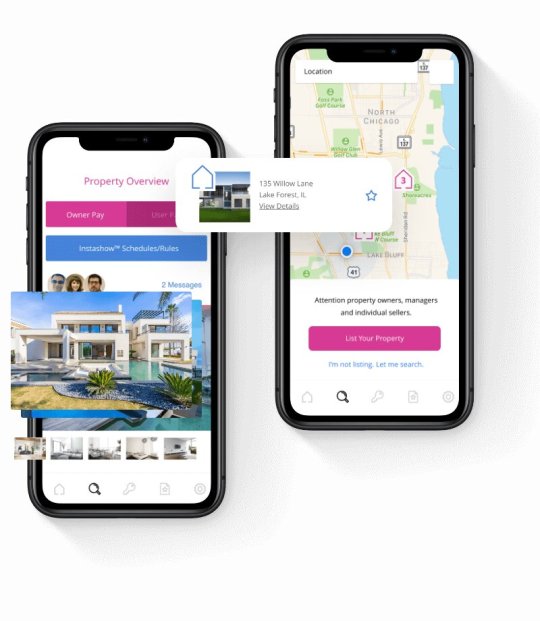
IoT Network Protocols (e.g., MQTT, CoAP)
Harness robust IoT network protocols, including MQTT and CoAP, for seamless connectivity!
#IoT software development services#embedded software development services#IoT device selection#IoT strategy consultation#IoT data visualization tools#edge computing for IoT#IoT network protocols (e.g.#MQTT#CoAP)#IoT user experience design#AI in IoT solutions#IoT and blockchain integration#IoT app design services#IoT app development#IoT device integration#IoT data analytics services#IoT security solutions#custom IoT application development#enterprise IoT services#industrial IoT solutions#IoT firmware development#IoT cloud integration#IoT connectivity solutions#mobile app development#software development#TechAhead Corp#TechAheadCorp#techaheadcorp.com
0 notes
Text
IoT Device Selection
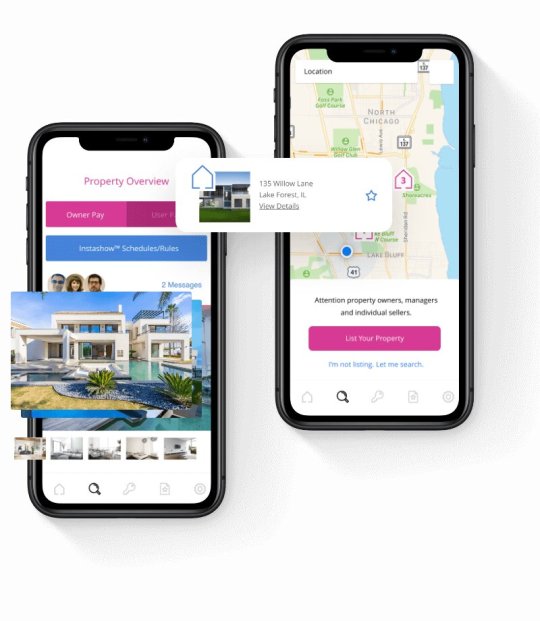
IoT App Development Company: Everything You Need To Know
Get a balance between quality, cost, and time with superior IoT Services for dealing with your business challenges in the best possible manner. We serve global clients with boastful services on a varied scale, with end-to-end network vs. device integration services with the most innovative solutions. Optimize your IoT strategy with meticulous IoT device selection tailored to your goals.
Benefits of IoT Development
The Internet of Things (IoT) is the technology that allows businesses to integrate their service via secondary devices. With IoT, you can build user-friendly apps compatible with various devices, operating systems, and screen resolutions. You can also integrate your smart apps with third-party apps using secure APIs and collect vital user data and behavior on the mobile application to personalize the experience even further.
How to choose a reliable partner for IoT Development?
While analyzing an IoT vendor partner, you should prioritize secure organizations that behold strong web security and development. You must also adopt Full-stack organizations and companies that can establish an ‘all-in-one’ solution that manages a single project’s hardware, mobile interface, and web interface. Opting for a vendor offering these development capabilities and improvements is a much safer bet.
Why TechAhead for IoT App Development?
With over 13+ years of experience delivering cutting-edge digital transformation and mobility solutions, TechAhead has been a major digital partner for globally established companies like Disney, Audi, and American Express. Clutch has ranked us among the top IT IoT development services companies and the top multicultural companies with a strong-willed presence across Los Angeles and Noida.
Who is the top IoT development company?
TechAhead, of course! We have been accelerating business agility and stimulating digital transformation since 2009. Our company was recognized last year as the top IT service provider by Leaders Matrix, an industry-recognized, unbiased ranking entity.
We disrupt the traditional outsourcing model of other IoT companies. We ensure long-term and sustainable success for our customers and the mobile and digital ecosystem. Our relationships with our customers go beyond transactional. Our software development services give entrepreneurial ideas life. We infuse existing mobile and digital platforms with innovation and creativity.
What are the top IoT Apps developed by TechAhead?
We are a world-class digital transformation and mobility solution company and have delivered over 2,000+ project developments on Android, iOS, and cross-platform compatible apps for global brands. We recently announced the launch of “The Healthy Mummy” fitness app, which was recently ranked the world’s #1 Mum’s fitness app, attracting over 2M+ users and adding to many of our success stories.
What about Data security and integrity of IoT Apps?
All TechaAhead development practices are highly efficient and secure thanks to meticulous adherence to security practices and data governance at every step. Our development process considers the devices connected, cloud computing requirements, IoT platforms, and security while developing IoT mobile applications. We ensure that our IoT apps follow all the guidelines and protocols for the highest security.
How to get IoT app maintenance help and post-launch support?
Our role remains strong after the go-live. TechAhead takes full responsibility for the smooth functioning of IoT solutions in your company. With platform support services, maintenance, and the support of process management, our team will monitor your app’s success, it’s adaptability and remove any bugs/errors as per our client’s business needs and user reviews.
In conclusion, the world of IoT app development is a realm of boundless possibilities. Through TechAhead's expertise and commitment, businesses can harness the power of IoT to create user-friendly apps, ensure data security, and drive innovation. TechAhead's track record of success, recognition, and dedication to post-launch support make it a reliable partner in the journey of IoT app development. With a focus on disruptive innovation and holistic relationships, TechAhead is poised to continue shaping the landscape of IoT solutions, delivering transformative results for businesses worldwide!
#IoT software development services#embedded software development services#IoT device selection#IoT strategy consultation#IoT data visualization tools#edge computing for IoT#IoT network protocols (e.g.#MQTT#CoAP)#IoT user experience design#AI in IoT solutions#IoT and blockchain integration#IoT app design services#IoT app development#IoT device integration#IoT data analytics services#IoT security solutions#custom IoT application development#enterprise IoT services#industrial IoT solutions#IoT firmware development#IoT cloud integration#IoT connectivity solutions#mobile app development#software development#TechAhead Corp#TechAheadCorp#techaheadcorp.com
0 notes
Text
Brief history of Cloud computing: Shared Mainframes to Managed Cloud Solutions

History of Cloud Computing: Marking a significant shift in its business model, IBM announced last week that it is splitting itself into two public companies. Its IT infrastructure support unit would be listing itself as a separate company by the end of 2021.
The core business of IBM would now be high margin cloud computing, with focus on open hybrid clouds and AI solutions. It has not come as a surprise to industry watchers and insiders because IT infrastructure support is rapidly becoming a shrinking, low-margin operation due to cloud computing and automation.
Moving to cloud computing as a core offering is a natural progression for IBM since it played a pivotal role in the evolution of cloud computing from time-sharing mainframes to virtual data servers. After all, IBM was the company that manufactured the first commercially viable mainframes. Let us look at the history of cloud computing briefly to appreciate this better.
What is cloud computing?
Cloud Computing can be defined as the availability of shared computer resources as per users’ requirements. In other words, flexible availability of data storage space, computing power, technical tools, and applications, where users pay only for those resources that they use. As many users are utilizing the same set of resources, the cost of setting up, maintaining, and using the assets decreases considerably.
Time Sharing Mainframes - Concept behind evolution of Cloud Computing
The concept behind cloud computing has evolved over the past eight decades, starting from the 1950s when companies like IBM and DEC proposed and implemented the concept of time-sharing for their Mainframe machines to help clients optimize costs.
By implementing time sharing, organizations installed just one or two mainframes on the premises and multiple terminals from anywhere in the building could hook up to it. This led to the maximization of their investments. This concept of time sharing became popular as a means to optimize usage of expensive physical assets and evolved beyond optimizing Mainframe computational capabilities.
If you look at the Mainframe arrangement, what it essentially meant was users sitting on their terminals were using infrastructure that was physically distant from them. Whenever they wanted, the resources were available as if they were the sole users when in reality, they were sharing it with many other users. This is the concept behind Cloud Computing.
Let's now look at how cloud computing has evolved over the decades.
Sharing computing resources over network (1955 – 2000)
In 1955, the computing time sharing theory was proposed by American computer scientist John McCarthy. It enabled businesses to make optimum use of their Mainframes.
In 1963 the Defence Advanced Research Projects Agency (DARPA) granted USD 2 million to Project MAC, whose aim was to develop high availability time sharing systems. It developed a primitive cloud where computational resources were shared between 2-3 users.
It was not yet called Cloud Computing; the term used was virtualization. Software-based representation of hardware resources like servers, storage devices and networks is called virtualization.
The concept of virtualization evolved with the Internet and use of virtual private networks (VPNs) became very popular in the 1970s, which eventually led to the development of modern cloud computing. VPNs were like fully functional computer systems with their own operating systems.
Modern use of the term cloud computing
The origin of the term cloud computing is still debatable. A deeply researched MIT Technology Review article says it could have been either Sean O'Sullivan, a young technologist who later tried to patent the term "cloud computing" but failed, or George Favaloro, a Compaq marketing executive. In the said meeting in 1996, the two were discussing Compaq taking over Sullivan's start-up selling Internet computing.
Even though it is not clear who used the term cloud computing first in the 20th century, in its modern avatar the term cloud computing was first used and explained by Google CEO Eric Smith in 2006 in Search Engine Strategies Conference.
Development of cloud computing platforms (2001 – till date)
Amazon was the first major company to offer cloud computing services. It launched Amazon Web Services and introduced its Elastic Compute Cloud (EC2) in August 2006. It was a pay-as-you-use subscription model that gained in popularity quickly.
Google App Engine was launched in April 2008 as a Platform as a Service (PaaS) to capture the growing interest in web applications hosted on the cloud. It allowed developers to build and host apps on Google Cloud infrastructure. It was formally adopted as the Google Cloud Platform in 2013.
Microsoft released Microsoft Azure in February 2010.
In July 2010 Rackspace Hosting and NASA jointly launched an open-source cloud-software initiative OpenStack.
In March 2011, IBM announced the IBM SmartCloud framework.
In June 2012 Oracle announced Oracle Cloud. It provides users with access to an integrated set of IT Solutions, including applications, platforms, and infrastructure layers.
Most popular cloud service providers in 2020
If you want to read about their offerings in detail, you can do so here. And just to give you a glimpse into the growth achieved by these cloud platforms, here are 2020 Q2 revenue figures for some of them.

All these cloud platforms are high availability, pay as you use models that provide its users easy access to latest technologies like artificial intelligence, edge computing, IoT, big data, multi-cloud, machine learning, etc.
This is proving to a great leveler in the business landscape as organizations without high-end IT infrastructure and knowledge can also leverage these technologies to drive growth.
Why cloud computing became popular at the beginning of this millennium
The primary reason behind rising popularity and acceptance of cloud computing is widespread digital transformation of businesses across all industries. As businesses turn digital, workloads and data volumes grow bigger, increasing data storage and related services requirements.
Not all enterprises, big or small, have the necessary in-house IT capabilities to manage on their own. Cloud computing service providers take care of data servers, databases, networking, applications, analytics and other related infrastructure.
Of course, some industries like manufacturing, healthcare, retail, banking and entertainment are leveraging cloud computing technologies more than others. This is because some operational models are easier to adapt.
Why should business adopt cloud computing
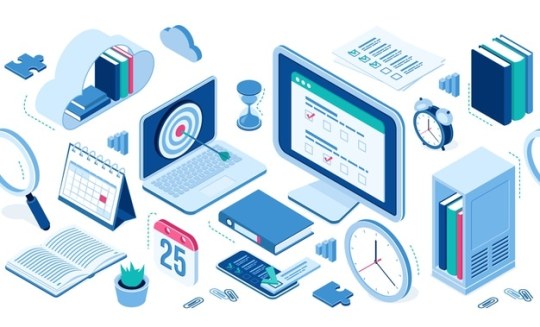
Outsourcing data storage and analysis to cloud is a smart business decision for organizations of all sizes and capabilities. Even those with a decent amount of in-house IT skills can benefit by this as it offers many advantages. The time and resources saved can be utilized in core business functions.
No need to set up infrastructure: The most significant advantage of using cloud computing is that organizations do not need to install software or hardware. Besides taking care of the installation headache in the cloud service provider is also responsible for maintenance and upgradation of the infrastructure. This means that the user does not need to have skills for these; cutting down on both time and cost.
Automatic upgrades: Keeping up with the latest technological trends is the most challenging aspect of any technology. When you sign up for cloud computing services, you do not need to devote your time or resources on up-gradation and integrating with the latest version. It is taken care of by the service provider.
Integrating legacy applications: Barring startups, most organizations come with their own Legacy app modernization services. It is a no-brainer that customizing them to meet the latest technological advancements can be both expensive and time-consuming. On top of that, one can never be sure of the outcome. Replacing them completely with new applications would be time and resource-intensive, as also wastage of perfectly usable infrastructure. In contrast, integrating it with cloud technologies is a better and easier proposition.
Reduction in IT infra capital expenditure: Setting up and maintaining IT infrastructure is an expense for any organization, however big. Using a public cloud means organizations can cut down on initial investment; all they need to worry about is the operational expenses for using the cloud. As most cloud service providers use a subscription or pay as you use the model, the expenses can be adjusted as per requirement. This results in a reduction of overall IT cost overhead for the company.
Easier maintenance of applications: Whether you are using a public cloud or a private one, maintenance of cloud computing applications is easier because there is just one instance of the application that needs to be maintained. In a traditional software model, each application is installed on multiple systems and each system must be managed.
Easy scalability: Cloud delivery model also ensures that businesses do not need to think about the availability of infrastructure when planning to scale up. For on-premise, capital expenditure on adding IT infrastructure like data servers, applications, networking, etc. can become a major cause of concern in case of expansion.
Cloud delivery models
Cloud services can be delivered in three models – public, private and hybrid.
Public cloud
In the public cloud model, the IT services are delivered over the Internet. It is the most popular model of delivering cloud computing services because it is highly scalable and usually has low-cost subscription-based pricing.
Services may be free, freemium, or subscription-based where users pay as per the number of resources consumed. The cloud service provider is responsible for developing, managing, and maintaining the compute resources being shared between multiple users across the network.
Even though public cloud is very cheap because no investments are required and subscription fees are typically low, it has downsides as well. Public cloud is least secure and hence it should not be used for sensitive, mission critical, workloads.
In lieu of low pricing, users also have minimum technical control and hence ensuring compliances can be an issue. Even though the subscription costs are low, if usage reaches a certain level, the total cost may rise exponentially.
Private cloud
Any cloud solution that is used by a single organization is called a private cloud. The resources and the tools are not shared between multiple users. As resources are not shared, data centers may be located on-premise or offsite. The resources are delivered via a secure private network and not shared by any other channel.
The most important advantage of the private cloud is it is highly secure and customizable according to the unique business and security requirements of the organization. But that also renders it expensive. Therefore, it should be used in cases where sensitive data needs to be stored and the IT compliances are very high. Usually, highly regulated Industries like banking and government agencies use private clouds.
Hybrid cloud
As the name indicates, hybrid cloud is a combination of both public and private cloud. Typically, it combines on-premises infrastructure with a private cloud in such a way that data and apps can move between the two environments seamlessly.
The decision to use hybrid cloud model is usually taken keeping in mind multiple factors like data security requirements, regulation and compliance requirements, level of data control, applications used, business goals, etc.
Hybrid cloud is also gaining popularity due to the growth of IoT over the past decade. Hybrid cloud can easily be customized to include edge computing at scale. Edge computing brings computing closer to IoT devices, which ensures that time and resources spent in communication with data servers are decreased drastically.
Data privacy and security concerns in cloud computing
No discussion on cloud computing can be complete without considering data privacy and security concerns related to using Cloud Computing applications. Like any technology, cloud computing is a double-edged sword. On the one hand, as the data is centralized it is easier to secure it.
On the other hand, as data is stored on the cloud that is third party location, data privacy and security depend upon the policies adopted by the cloud service provider.
Businesses must research the privacy and security policies of a cloud service provider before signing up. Ideally, the service provider should be able to keep customer data safe from leaks and theft, and also customize services to implement security measures specific to any organization.
TechAhead’s expertise in cloud computing
TechAhead offers end-to-end cloud consulting services. We possess expertise in the development, deployment, migration, transformation, management, and maintenance of cloud services.
Our team can help you in selecting the right cloud deployment model – public, private, or hybrid – for your business by sharing technical knowledge. We host apps through all three models. The public cloud services are hosted on Amazon AWS, Microsoft Azure, and Google Cloud Platform, the top three cloud service providers in the industry.
Summary
Cloud computing is the flexible availability of data storage space, computing power, technical tools, and applications where users pay only for those resources that they use. Since many users are utilizing the same set of resources, the cost of use decreases drastically. Also, enterprises that do not have in-house IT skills can use IT tools easily.
The decision to select the right cloud model should be taken on the basis of data security requirements and regulation and compliance requirements, applications used, business goals, etc.
0 notes
Text
youtube
Digital Marketing Services
TechAhead offers comprehensive digital marketing services that encompass various strategies and techniques, including SEO, social media marketing, content creation, and more, to help businesses establish a strong online presence and drive growth!
#https://www.techaheadcorp.com/#web application development#custom web development#web development services#responsive web development#mobile app development#software development#front-end development#back-end development#full-stack development#UI/UX design#web development company#website development#application development#e-commerce development#database development#API development#cloud-based development#CMS development#JavaScript development#PHP development#Python development#Ruby on Rails development#Java development#.NET development#Laravel development#TechAhead Corp#TechAheadCorp#techaheadcorp.com#Youtube
0 notes
Text
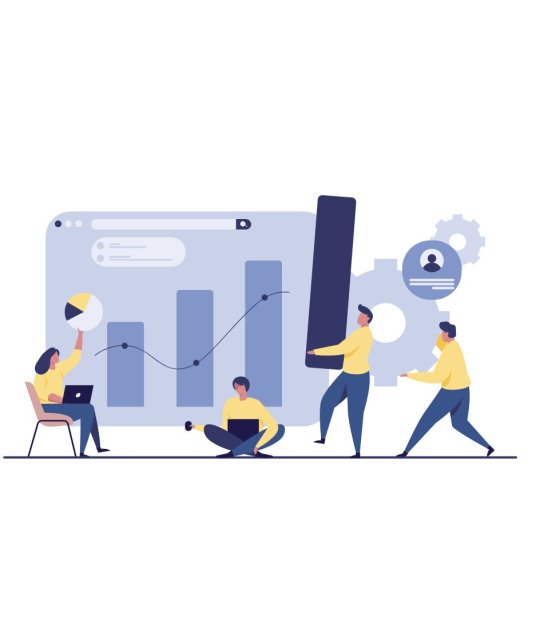
Digital Marketing Services
TechAhead's comprehensive digital marketing services encompass a wide range of strategies, including search engine optimization, social media marketing, content creation, and more, to help businesses establish a strong online presence, reach their target audience, and achieve their marketing goals!
#https://www.techaheadcorp.com/services/digital-growth-marketing-services/#digital marketing services#growth marketing strategies#online advertising#search engine optimization#social media marketing#content marketing#email marketing#conversion rate optimization#website analytics#pay-per-click advertising#mobile marketing#influencer marketing#video marketing#lead generation#customer segmentation#marketing automation#brand development#online reputation management#user experience optimization#data-driven marketing#digital campaign management#audience targeting#competitive analysis#marketing funnel optimization#strategic planning#web application development#custom web development#web development services#responsive web development
0 notes
Text
Social Media Marketing
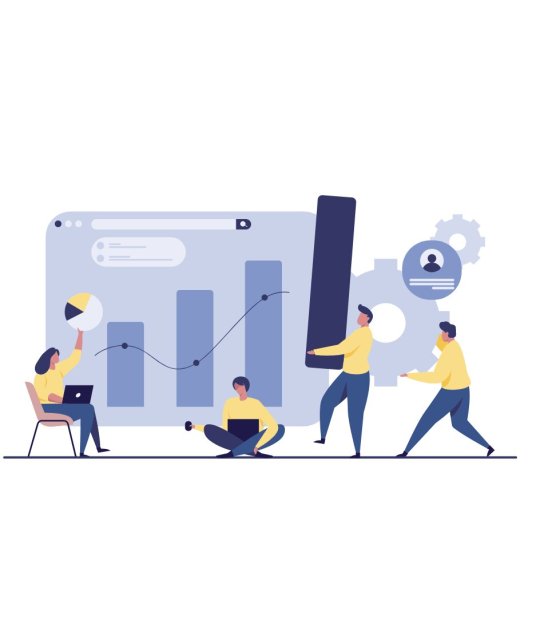
Digital Growth Marketing: Everything You Need To Know
Find out how we deliver consistent & measurable results for our Digital Marketing clients, right from conceptualizing ideas to flawless execution and beyond. We have streamlined the methodologies to perfection, and are ready to customize them to your needs.
Will my CAC (Customer Acquisition Cost) go down with your strategy and how?
We have in-house growth marketing experts who will work on a long-term and short-term strategy. So, for the short term, we will be focusing on getting prospects, discovery audience, and conversions, which are essential for running smooth business operations. In the long-term plan, we’ll be focusing on how to reduce your overall marketing budget, which means that we’ll also focus on how to reduce the CAC.
What will I get if I sign up for the digital growth marketing service from TechAhead?
You’ll get to work with a team that packs in decades of experience in growth marketing and mobile app development. Moreover, you’ll see escalated app retention, app downloads, and user growth throughout working with us.
How much growth can I attain with your digital growth marketing services?
There’s no specific number to that, but we’ll go for more and more prospect reach while trying to cut down the cost involved in marketing. These are the two most important metrics that a business focuses on. But if you want specific growth estimates, you can discuss them with an expert directly. They can provide you with a better insight into this.
How much would digital growth marketing service cost me as a small-time entrepreneur?
We have different plans that allow us to partner with different kinds of entities. So, whether you’re a small-scale startup or a big conglomerate doesn’t matter. We fit well within the scope of almost everyone who seeks growth.
I have a website for which I need digital marketing; What’s the procedure?
Being in the website development and optimization market for so long, we can not only develop great websites but plan digital marketing strategies, which bring us long-term, consistent results. So, if you choose TechAhead as your preferred Digital Marketing Service Provider, we’ll ensure that you’ll unlock the desired growth you’ve envisioned. Moreover, to get started, we must listen to your idea, evaluate and begin with a growth strategy approved by both sides. Ready to take the first steps toward growth?
I am concerned about data security and privacy.
We deploy state-of-the-art data security and data privacy mechanisms, and protocols, that ensure complete data protection for all our clients. Your data is always safe with us, and that’s our iron-clad promise.
Our digital growth marketing services offer businesses the opportunity to thrive online. With a range of strategies like SEO, social media marketing, and content creation, we help establish a strong digital presence. By using data-driven insights and continuous optimization, we deliver measurable results. Unlock your business's potential and fuel your growth with us. Contact us today to get started!
#https://www.techaheadcorp.com/services/digital-growth-marketing-services/#digital marketing services#growth marketing strategies#online advertising#search engine optimization#social media marketing#content marketing#email marketing#conversion rate optimization#website analytics#pay-per-click advertising#mobile marketing#influencer marketing#video marketing#lead generation#customer segmentation#marketing automation#brand development#online reputation management#user experience optimization#data-driven marketing#digital campaign management#audience targeting#competitive analysis#marketing funnel optimization#strategic planning#web application development#custom web development#web development services#responsive web development
0 notes